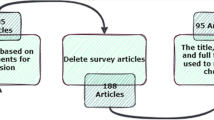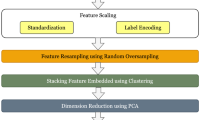Abstract
Intrusion detection is a crucial technology in the communication network security field. In this paper, a dynamic evolutionary sparse neural network (DESNN) is proposed for intrusion detection, named as DESNN algorithm. Firstly, an ensemble neural network model is constructed, which is processed by a dynamic pruning rule and further divided into advantage subnetworks and disadvantage subnetworks. The dynamic pruning rule can effectively reduce the subnetworks weight parameters, thereby increasing the speed of the subnetworks intrusion detection. Then considering the subnetworks performance loss caused by the dynamic pruning rule, a novel evolutionary mechanism is proposed to optimize the training process of the disadvantage subnetworks. The weight of the disadvantage subnetworks approach the weight of the advantage subnetworks by the evolutionary mechanism, such that the performance of the ensemble neural network can be improved. Finally, an optimal subnetwork is selected from the ensemble neural network, which is used to detect multiple types of intrusion. Experiments show that the proposed DESNN algorithm improves intrusion detection speed without causing significant performance loss compare with other fully-connected neural network models.








Similar content being viewed by others
Data Availability
The KDD-Cup 99 data in this paper are from its official website as http://kdd.ics.uci.edu/databases/kddcup99/kddcup99.html.
References
Ahmim, A., Derdour, M., & Ferrag, M.A. (2018). An intrusion detection system based on combining probability predictions of a tree of classifiers. International Journal of Communication Systems, 31(9).
Ahmad, Z., Khan, A.S., & Shiang, C.W., et al. (2020). Network intrusion detection system: A systematic study of machine learning and deep learning approaches. Transactions on Emerging Telecommunications Technologies. 32(1)
Wei, P., Li, Y., Zhang, Z., et al. (2019). An optimization method for intrusion detection classification model based on deep belief network. IEEE Access., 7, 87593–87605.
Malaiya, R. K., Kwon, D., Suh, S. C., et al. (2019). An empirical evaluation of deep learning for network anomaly detection. IEEE Access., 7, 140806–140817.
Zheng, S. (2021). Network intrusion detection model based on convolutional neural network. IEEE 5th Advanced Information Technology, Electronic and Automation Control Conference (IAEAC). 634-637
Parimala, G., & Kayalvizhi, R. (2021). An effective intrusion detection system for securing IoT using feature selection and deep learning. International Conference on Computer Communication and Informatics (ICCCI), 1–4
Seth, S., Kaur, K., & Singh, G. (2021). A novel ensemble framework for an intelligent intrusion detection system. IEEE Access
Denil, M., Shakibi, B., Dinh, L., et al. (2013). Predicting parameters in deep learning. Conference and Workshop on Neural Information Processing Systems. 2148-2156
Srinivas, S., & Babu, R.V. (2015). Data-free parameter pruning for deep neural networks. British Machine Vision Conference. 2830-2838
Ullrich, K., Meeds, E., & Welling, M. (2017). Soft weight-sharing for neural network compression. International Conference on Learning Representations
Guo, Y.W., Yao, A.B., & Chen, Y.R. (2016). Dynamic network surgery for efficient DNNs. Conference and Workshop on Neural Information Processing Systems. 1379-1387
Aldweesh, A., Derhab, A., & Emam, A. Z. (2020). Deep learning approaches for anomaly-based intrusion detection systems: A survey, taxonomy, and open issues. Knowledge-Based Systems, 189, 2020.
Vani, R. (2017). Towards efficient intrusion detection using deep learning techniques: a review. International Journal of Advanced Research in Computer Science and Electronics Engineering., 6(10), 375–384.
Kang, M. J., Kang, J. W., & Tang, T. (2016). Intrusion detection system using deep neural network for in-vehicle network security[J]. Plos One, 11(6), e0155781.
Kim, J., Kim, J., Thu, H., & Kim, H. (2016). Long short term memory recurrent neural network classfier for intrusion detection. International Conference on Platform Technology and Service. 1-5
Feng, F., Liu, X., Yong, B., et al. (2019). Anomaly detection in ad-hoc networks based on deep learning model: A plug and play device. Ad Hoc Netw, 84, 82–89.
Liu, G.J., & Zhang, J.B. (2020). CNID: Research of network intrusion detection based on convolutional neural network. Discrete Dynamics in Nature and Society
Marín, G., & Casas, P. (2018). Rawpower. Deep learning based anomaly detection from raw network traffic measurements, in: ACM SIGCOMM 2018 Conference on Posters and Demo. 7: 75–77. 2018
Acknowledgements
This work was supported by the National Natural Science Foundation of China under Grant No.61971117, by the Natural Science Foundation of Hebei Province (Grant No. F2020501007).
Funding
The authors have not disclosed any funding.
Author information
Authors and Affiliations
Corresponding authors
Ethics declarations
Conflict of interest
The authors declare that there are no conflicts of interest regarding the publication of this paper.
Additional information
Publisher's Note
Springer Nature remains neutral with regard to jurisdictional claims in published maps and institutional affiliations.
Rights and permissions
About this article
Cite this article
Liu, F., Xu, J., Zhang, L. et al. DESNN Algorithm for Communication Network Intrusion Detection. Wireless Pers Commun 126, 1705–1720 (2022). https://doi.org/10.1007/s11277-022-09817-5
Accepted:
Published:
Issue Date:
DOI: https://doi.org/10.1007/s11277-022-09817-5




